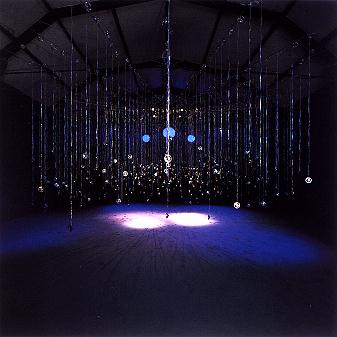 Susan Hiller b1940 Witness 2000 Courtesy the artist
New British Art 2000: Intelligence is the first in a series of major exhibitions of contemporary British art, to be held every three years at Tate Britain. intelligence will be the largest loan exhibition ever held by Tate and will feature the work of twenty British artists. Intelligence means both information gathering (intelligence as in M15) and the faculty employed to process information into something new. Many artists today can be seen as intelligence agents at large in society, gathering, sifting and transforming the raw data of our life, critically examining our environment, the way we live and our relations with each other. This exhibition brings together contemporary British artists who share such an approach. They see art as a means for imagining the world differently, or 'thinking otherwise' as the French philosopher Foucault put it. Their work asks questions and offers clues, but does not provide a complete answer. It is an investigation of the world and in turn they invite visitors to use their own intelligence to investigate the art and come to their own conclusions. The artists included are Oladélé Ajiboyé
Bamgboyé, Michael Craig-Martin, Martin Works exhibited include Tacita Dean's film Bubble House, an enigmatic meditation on the failure of the utopian aspirations of modernism, featuring an abandoned futurist house on a Caribbean island; Sarah Lucas's Life's a Drag Organs in which two burnt out cars decorated with unsmoked cigarettes suggest a pair of lungs; Bob and Roberta Smith's Protest where visitors can record their protests (at anything, including the exhibition) with a weekly selection being sign written onto the walls; and Gillian Wearing's Drunk, a three screen video projection made in collaboration with a group of street drinkers in South London. At the beginning, middle and end of Intelligence three artists, Julian Opie, Liam Gillick and Bill Furlong, will make works that suggest the crucial role of conversation and dialogue in the exhibition. New British Art 2000: Intelligence is curated by Charles
Esche, an independent curator and writer working with proto-academy,
Edinburgh, and Alterall journal and Virginia Button, Senior
Programme Curator, Tate Britain. |